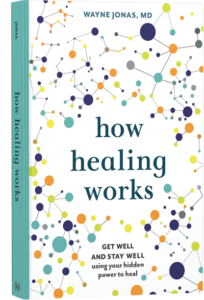A survey conducted by the National Center for Complementary and Integrative Medicine (NCCIM)found that yoga is one of the most sought after and used forms of complementary medicine.
According to NCCIM, people who seek the use of yoga to address back pain report after six months of practicing yoga significantly less disability, pain, and depression than patients who are only using conventional care.
Numerous studies attest to the benefits of yoga, the centuries-old mind-body practice, on a wide range of health-related conditions—particularly stress, mental health, and pain management.
This has led to the development of a new form of yoga: therapeutic yoga. In therapeutic yoga, traditional yoga postures are applied to treat chronic health conditions. Practitioners receive additional training in anatomy, physiology, psychology, and other medically related topics.
Most therapeutic yoga professionals work or affiliate in hospital or clinical settings and work one-on-one with patients.
The most common conditions yoga therapists see are anxiety, back and neck pain, joint pain and stiffness, and hypertension.
The Evidence Behind Therapeutic Yoga
Studies find therapeutic yoga practice can relieve stress; lower breathing and heart rate; reduce blood pressure and cortisol levels, and improve quality of life. The stretching and flexibility that comes with yoga practice provide pain relief, with studies demonstrating its benefits in patients with arthritis, carpal tunnel syndrome, and back pain. It has also been shown to improve anxiety, obsessive-compulsive disorder, major depression, and insomnia.
Significant benefits of yoga were reported in arthritis and other musculoskeletal disorders, as well as in cardiovascular endurance in healthy individuals. In patients with COPD and asthma, yoga programs focused on breath control and meditation significantly improve objective measures of lung function.
There is also good evidence that yoga practice mitigates risk factors for cardiovascular disease, including weight and blood pressure.
Some of the best medical centers in the country now offer yoga therapy, including the University of Texas MD Anderson Cancer Center, Memorial Sloan Kettering Cancer Center, and the Mayo and Cleveland Clinics.
Finding a Quality Practitioner
The International Association of Yoga Therapists (IAYT) sets educational standards for the training of yoga therapists and accredits training facilities. Standards include 90 hours of training in anatomy and physiology, as well as 45 hours devoted to learning about commonly used drugs and surgical procedures they may encounter, common medical terminology, psychology, and mental health.
Overall, therapeutic yoga instructors must complete a minimum of 800 hours of training over two years, most of which must be provided in person, not remotely. This includes a minimum of 205 hours as a practicum.
You can find members of IAYT here. The organization recently began a certification program.
Things to Note Prior to Practicing Therapeutic Yoga
There are a few side effects to be aware of before you start your yoga practice. Although rare, certain types of stroke, as well as pain from nerve damage, are among the possible side effects of practicing yoga. Minor side effects include dizziness, fatigue, weakness, nausea, and heat exhaustion.
Let your medical providers know that you would like to include therapeutic yoga in the tools you are using to improve your health.
To learn more about the benefits of therapeutic yoga, check out this patient pocket guide.
 Your Health Into Your Own Hands
Your Health Into Your Own Hands
Drawing on 40 years of research and patient care, Dr. Wayne Jonas explains how 80 percent of healing occurs organically and how to activate the healing process.
